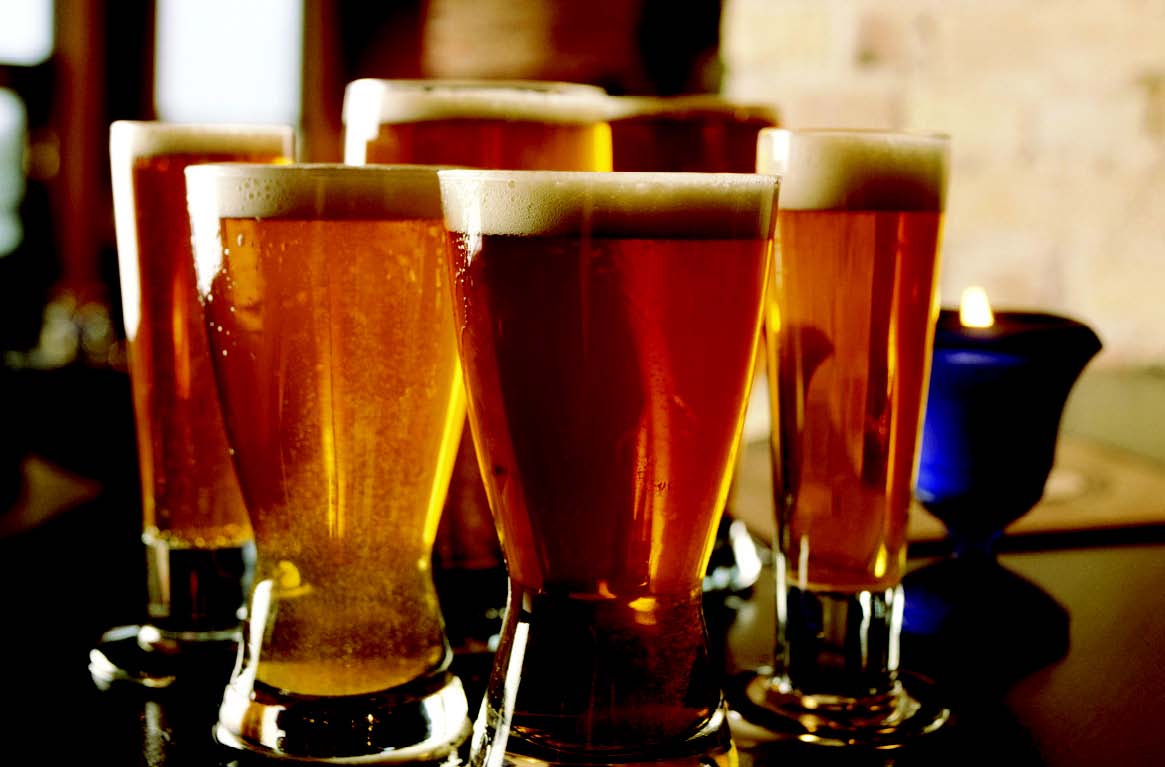

Jack Kenny, Beer Columnist
By Jack Kenny
We know that four ingredients are required to make beer: barley, hops, yeast and water. The combination of these makes the type of beer that is popular the world over. Some cultures will vary the ingredients, but the big four dominate the global beer scene.
Why are these four so important? In short, they make terrific beer, and tradition calls for them. The German beer purity law welded the bar in place in 1516 (where it remains today), and that had a significant impact on beers produced all over Europe and the colonies.
Why don’t brewers use other ingredients in their products? They do. Craft brewers make beer that incorporates different grains, other natural additives, plus fruit, seeds and spices. These are called adjuncts. Oats, for example, are used to make oatmeal stout, which has a smoother, rounder mouthfeel than the popular dry stout along with a hint of sweetness. Double IPAs use simple sugars to lighten the body. Lambics can include unmalted wheat, which supplies complex sugars that are slowly digested by microbes.
The beers we drink here are rarely, if ever, made solely from grains other than barley. This hardy staple provides the best foundation for beer in terms of flavor, body and character. Adjuncts serve as guests at the party.
Consider wheat. Wheat beer today is a common feature on the menu and in the cooler. Nearly all of it includes barley, which dominates the mix, because wheat in high concentrations is difficult to work with. Challenges are encountered in filtering the beer, reducing the dense haze caused by the higher levels of proteins in wheat, and the lack of enzymes for the conversion of starches into fermentable sugars.
All of the popular lagers produced by the global industry giants are brewed with rice and/or corn in addition to barley. Some beer purists look down on these two adjuncts, but there is no doubt that they satisfy consumer palates the world over. Demand for commercial light lagers might be declining in the USA, but elsewhere they are doing fine.
These two adjuncts are used for a couple of reasons: to maintain product consistency that satisfies consumer demands, namely a lighter flavor and paler color; and to reduce manufacturing costs, because both generally are cheaper than barley. Corn and rice have been used as the sole grain in beers among indigenous peoples for millennia, the former in Central and South America and the latter in eastern Asia, although corn beer is now scarce.
Less common but easy to find adjunct beers can be acquired year-round or seasonally, nearly all of them of the craft variety. Such adjuncts include chocolate, coffee, honey, maple syrup, fruits such as berries, citrus, mango and pumpkin; cinnamon, nutmeg, pepper, coriander and other spices, and ginger root. The growth of craft beer is responsible for these departures from the days of simple lagers. Even Germans are demanding access to quality adjunct beers, accounting for a rise in imports and a corresponding drop in consumption of domestic beer. Fruity Belgian lambics, of course, are brewed right next door.
Beyond adjuncts are additives, which fall more on the chemistry side of brewing. Many play specific roles in the brewing process and don’t end up in the final product. Some brewers might employ some, others more. As with adjuncts, additives are not favored by some consumers and brewers, but they have been used by large commercial producers for generations. After all, some say, the water we drink has a bunch of chemicals in it, so what’s wrong with a few in your brew?
The list includes high fructose corn syrup; carrageenans (a seaweed) and isinglass (from fish bladders) for clarity; propylene glycol alginate; urea; various sugars; caramel coloring; “natural” flavors; chemically modified hop extracts; various enzymes; potassium metabisulfite, and more. These are harmless in the quantities used in brewing, and some disappear or are removed before the liquid is packaged. In mass-produced beers, they are desirable for the maintenance of quality, consistency and longevity.
People are uncomfortable with change, but it occurs nonstop. Over the past 40 years the American beer experience has altered dramatically, and though the pace might slow, it won’t stop. Why insist for 502 years that the recipe for beer cannot change? Many a German beer lover will agree.
Jack Kenny has been writing The Beer Column for The Connecticut Beverage Journal since 1995. Write to him: thebeercolumn@gmail.com











